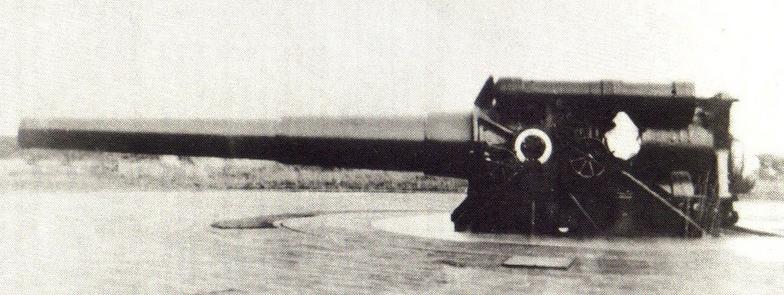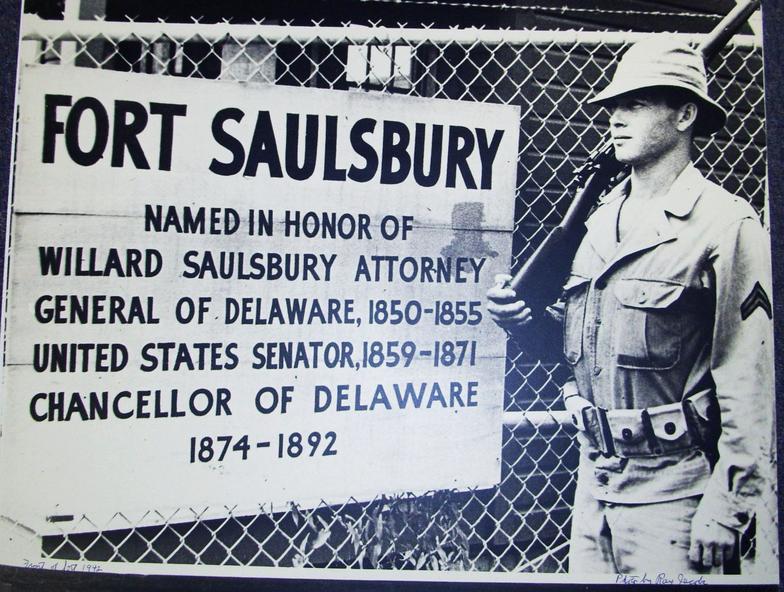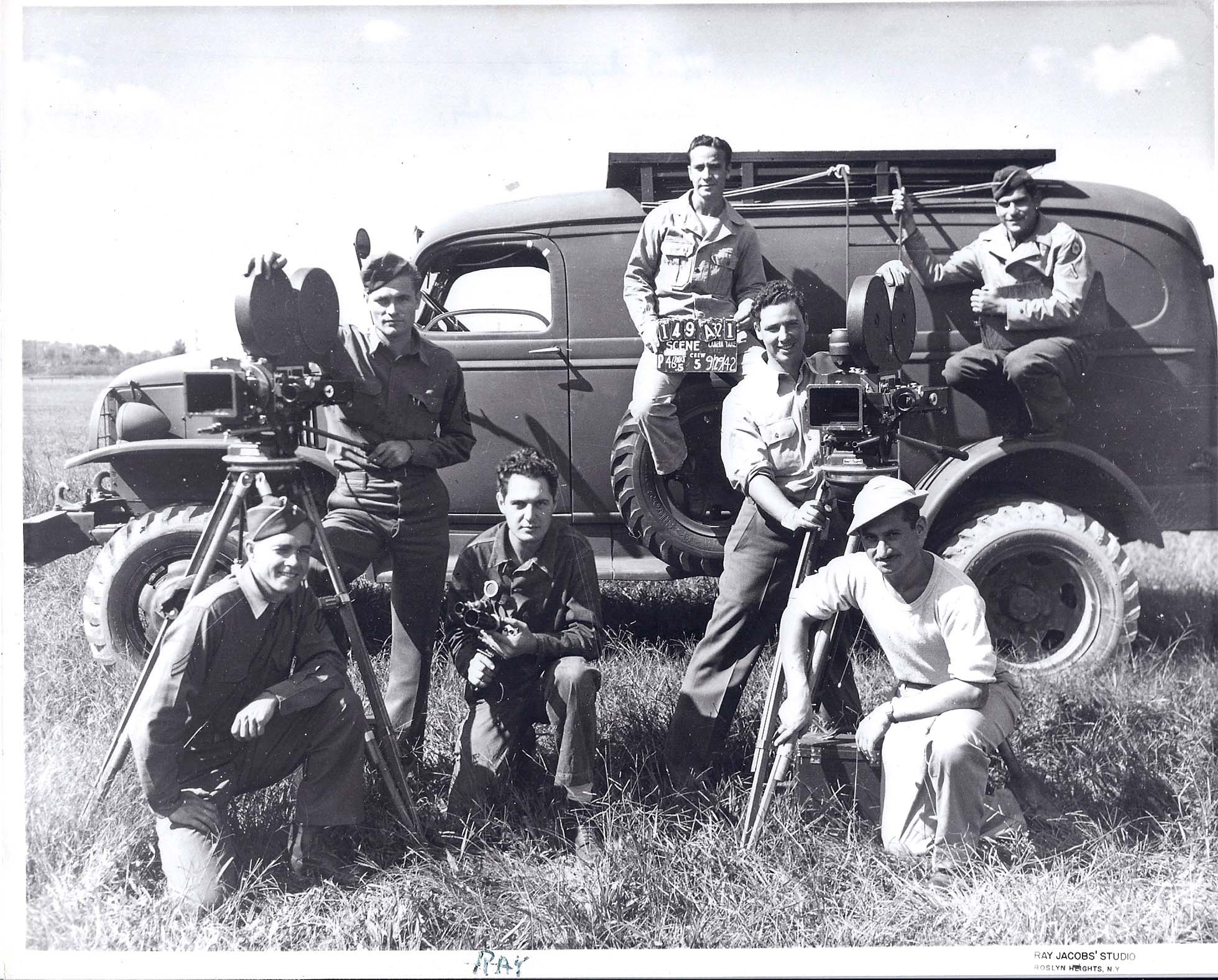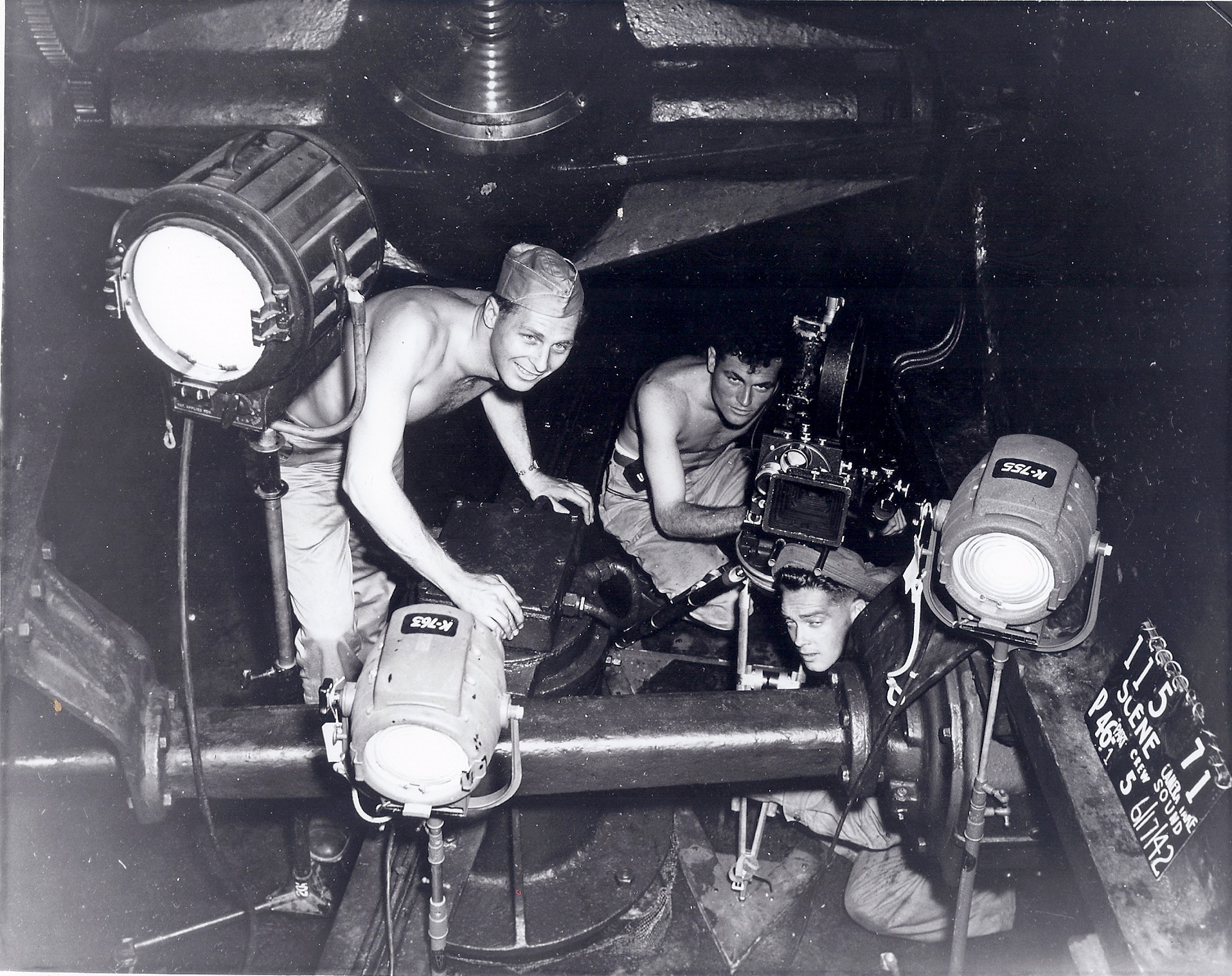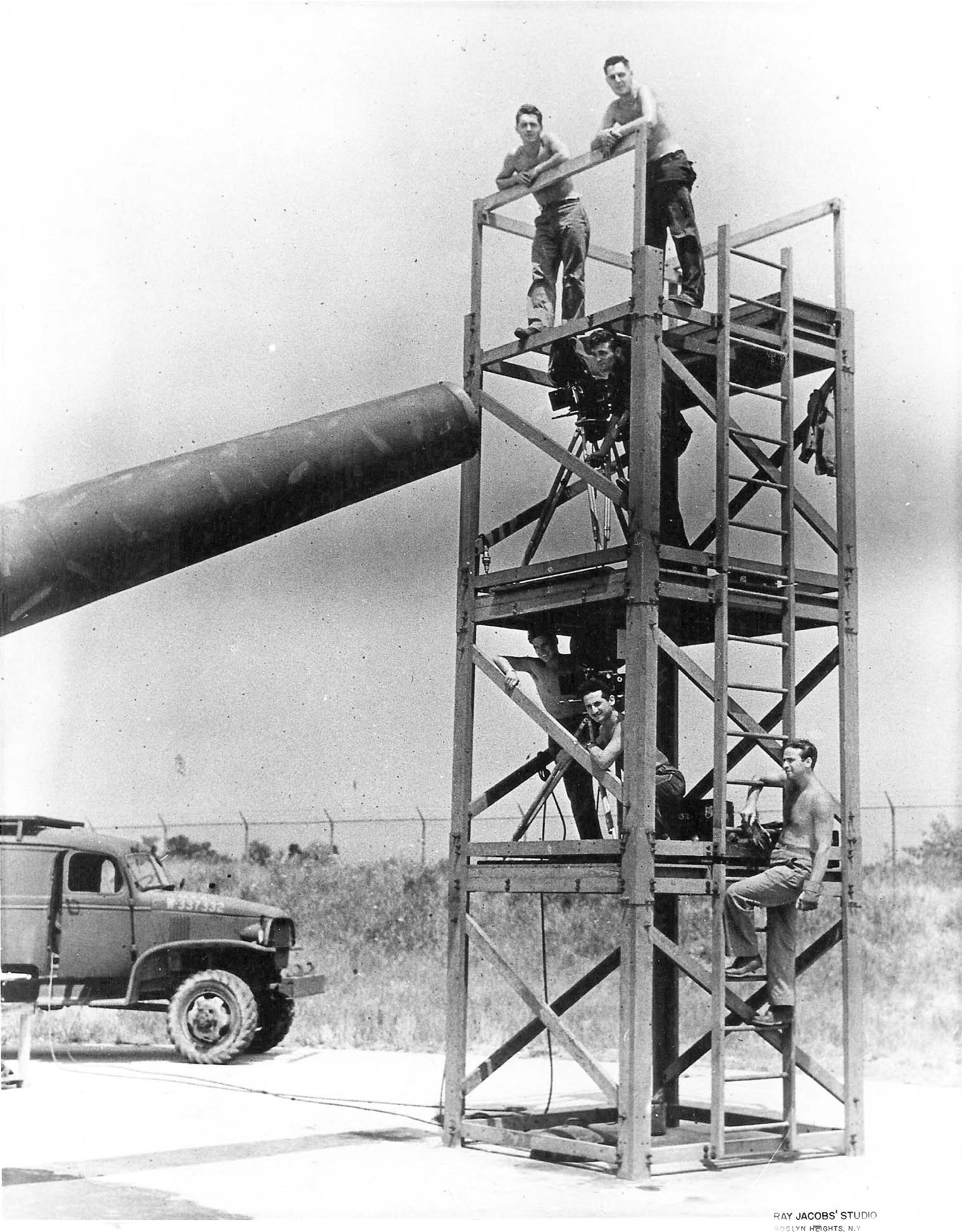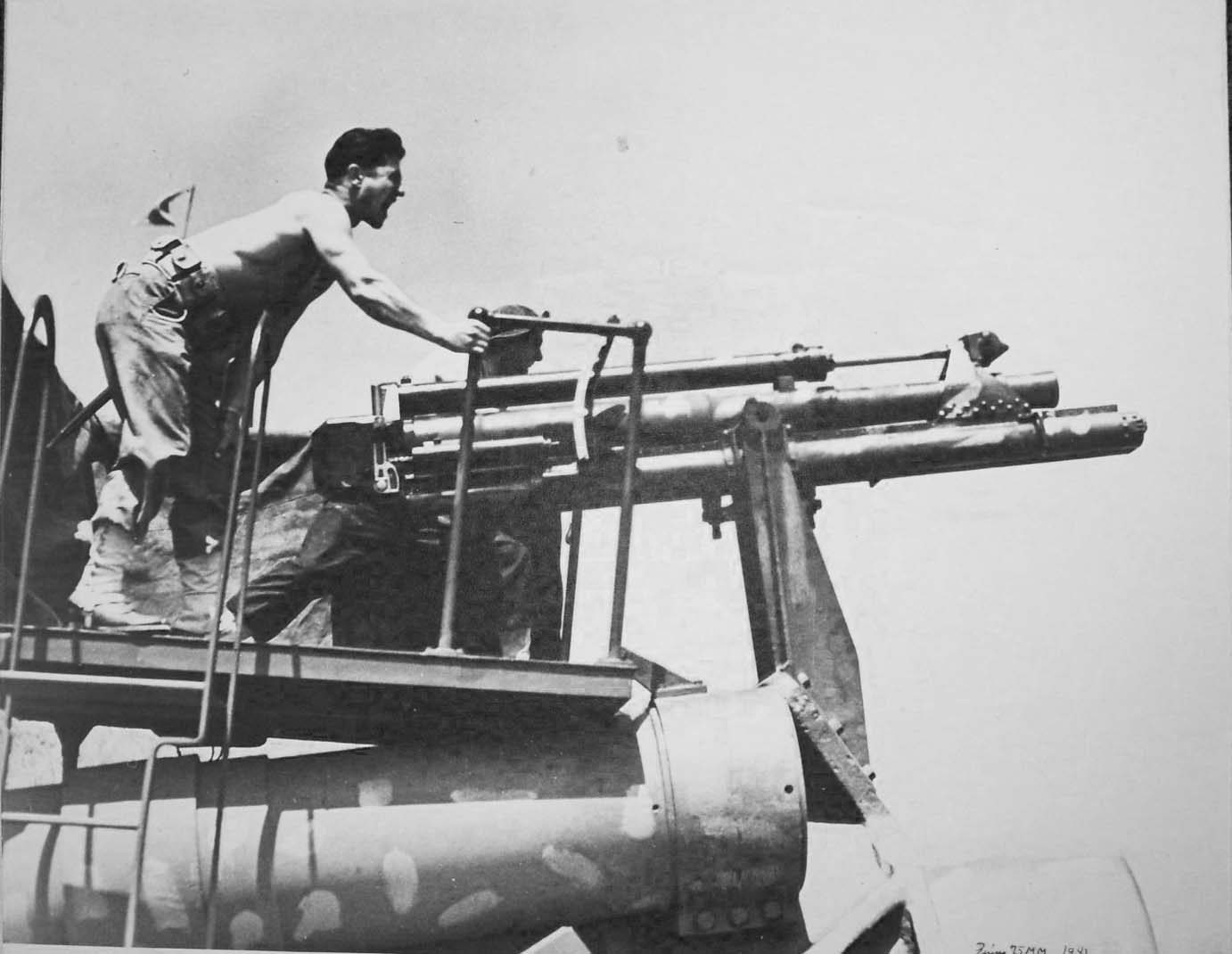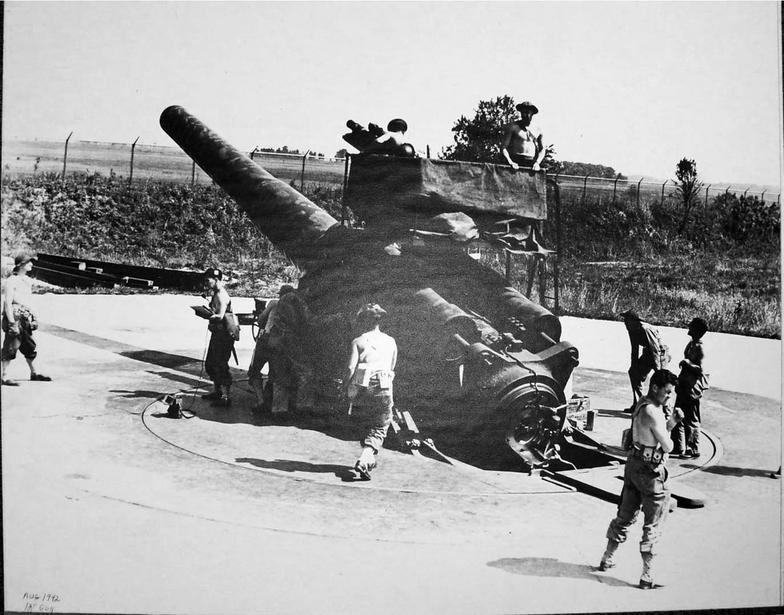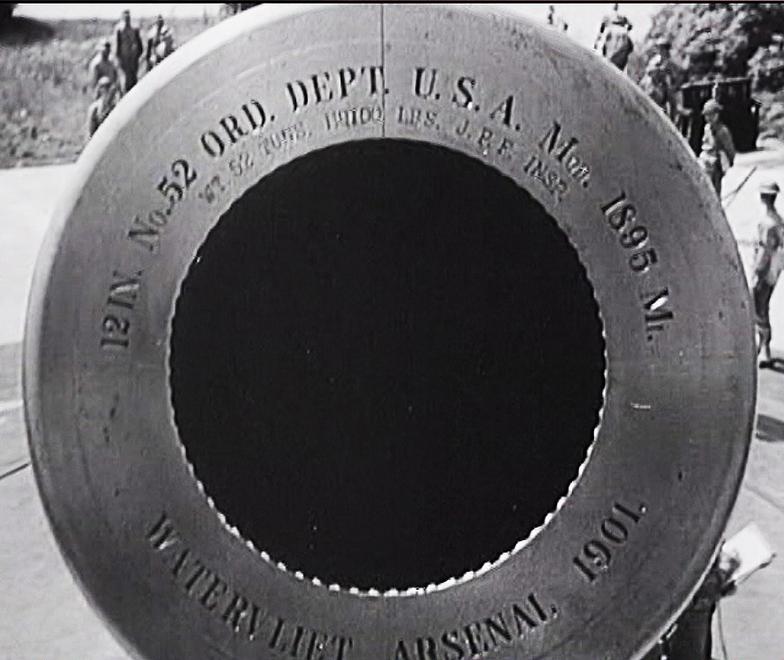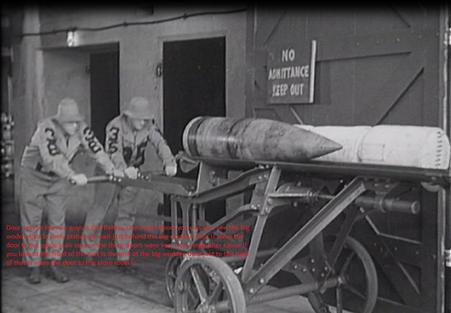Fort Saulsbury, DE
Delaware's Forgotten Fort
U.S. Army Training Films (TF) produced at Fort Saulsbury
The Signal Corps Photograhic Section was located at Fort Monmouth, New Jersey. An eight part training film series about the 12 inch gun with barbette mounting carriage was in the planning stages and a location for the filming to take place was needed. After several days of searching for a filming site for the series, it was decided to use the 12 inch Battery at Fort Saulsbury in Delaware as an ideal location. In May of 1942 (five months after the declaration of war), a Signal Corps Photographic Team under the direction of Capt. Ray began filming. The men manning the guns at Fort Saulsbury were members of Btry B of the 261st, under the command of Capt. Charles Brown. The filming lasted the entire summer.
This picture represents a Corporal on guard duty at the main gate
Men of the Signal Corps Photographic Team. It is believed that Capt Ray is third person from left.
This picture is of the film crew in the carriage mount area with the gun above them. Note the date of clapper board of 6/7/1942.
This is a picture of gun crew manning the gun.
The opening scene for the training films shows the gun from above. As the camera is rolling, the gun raises as if positioning to fire. The gun barrel stops with it pointed directly at the camera. The camera is looking at a close-up view of the end of the barrel. This picture shows the camera crew and the staging provided for that film segment. Apparently, there was some question by researchers of where the filming took place. These pictures and information confirm that the filming for the training films was done at Fort Saulsbury. An added note is that one of the training films is used at Fort Miles as part of the tour briefing for the museum visitors.
The 3 inch anti-aircraft guns were added for WW2 and mounted on top of the 12 inch guns as a training device. In this picture, you can see the gunner's platform is mounted just above the recoil tubes. The barrel of the 3 inch gun paralleled the barrel of the 12 inch gun. As a training device using "sub-caliber" ammunition, the gun crews could train and practice without having to fire the larger 12 inch gun. This not only saved wear on the 12 inch gun tube, it also saved the expense of 279 pounds of powder and a shell for each firing.
The painted spots that are visible are typically dabs of paint used to cover rust spots. It is a common practice to treat any rust spot with a wire brush and then painting over the area for maintenance, but the paint colors did not always match.
After federalization of the Delaware National Guard, the men from the Laurel and Georgetown Armories were assigned to the 261st Coast Artillery. After training at Fort DuPont, they were assigned to the new Fort Miles with Btry B going to Fort Saulsbury. The Commanding Officer for the the HQs Btry was Captain Albert Adams. He also held the additional duty of Battalion Supply Officer. He then was reassigned to be Commanding Officer for Btry A. Captain Adams was the Duty Officer at Fort Miles on December 7th, 1941 when the attack on Pearl Harbor took place.
He later had orders to attend a seven week course at Fort Monroe, Virginia which was the Coast Artillery School. Following the course, he was assigned to be a Visual Aids Development Officer and was asked to act as Technical Advisor for the proprosed 12 inch gun training films. He continued his work on training films which included working with Paramount Studios.
After the war, he was discharged from active duty on 27 April, 1946 with the rank of Major. About six months later, he continued his service with the Army National Guard and was appointed Brigadier General on 25 May, 1967.
Special thanks to The Milford Museum for providing the pictures on this page and to Judy Adams for the information about her father-in-law, General Albert Adams.
For a view of one of the Training Film Segments, click on link below.
It is about 10 minutes in length. Be sure to enlarge your screen.
The camera on the staging captures the above scene looking directly at the business end of a 12 inch cannon after it was filmed elevating into position. It is important to note that this picture confirms that the filming was done at Fort Saulsbury because the gun tube number 52 is clearly visible. The inventory cards indicate that gun tube number 52 was installed as gun #2 of Battery Hall.
For the purposes of training gun crews, the filming at Fort Saulsbury included each crew member wearing an assigned number representing the position of the crew member. In the picture above, crew members numbered 38 and 35 are transporting a shell to the gun using the specially designed shell cart. Note the powder bags located next to the shell.

